Past LSP Missions
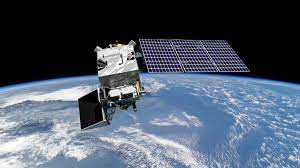
PACE
Launch Date: February 8, 2024
Launch Site: Cape Canaveral Space Force Station, FL
Launch Vehicle: SpaceX Falcon 9
PACE is NASA’s Plankton, Aerosol, Cloud, ocean Ecosystem mission, is scheduled to launch in 2024, extending and improving NASA’s over 20-year record of satellite observations of global ocean biology, aerosols (tiny particles suspended in the atmosphere), and clouds. PACE will advance the assessment of ocean health by measuring the distribution of phytoplankton, tiny plants and algae that sustain the marine food web. It will also continue systematic records of key atmospheric variables associated with air quality and Earth’s climate. The two fundamental science goals of PACE are to extend key systematic ocean color, aerosol, and cloud data records for Earth system and climate studies and to address new and emerging science questions using its advanced instruments, surpassing the capabilities of previous and current missions. Goddard Space Flight Center (GSFC) is responsible for the principal mission elements, including the design and fabrication of the spacecraft, development of scientific instrumentation.
Psyche
Launch Date: October 13, 2023
Launch Site: Cape Canaveral Space Force Station, FL
Launch Vehicle: SpaceX Falcon Heavy
The Psyche mission is a journey to a unique metal asteroid orbiting the Sun between Mars and Jupiter. What makes the asteroid Psyche unique is that it appears to be the exposed nickel-iron core of an early planet, one of the building blocks of our solar system. Deep within rocky, terrestrial planets – including Earth – scientists infer the presence of metallic cores, but these lie unreachably far below the planets’ rocky mantles and crusts. Because we cannot see or measure Earth’s core directly, Psyche offers a unique window into the violent history of collisions and accretion that created terrestrial planets. The mission is led by Arizona State University. NASA’s Jet Propulsion Laboratory is responsible for mission management, operations, and navigation.
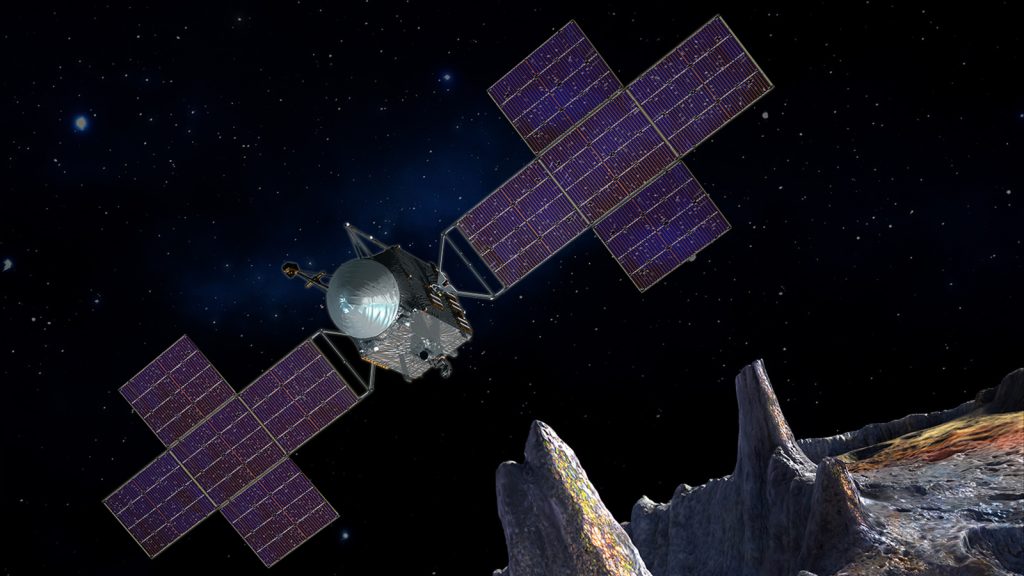
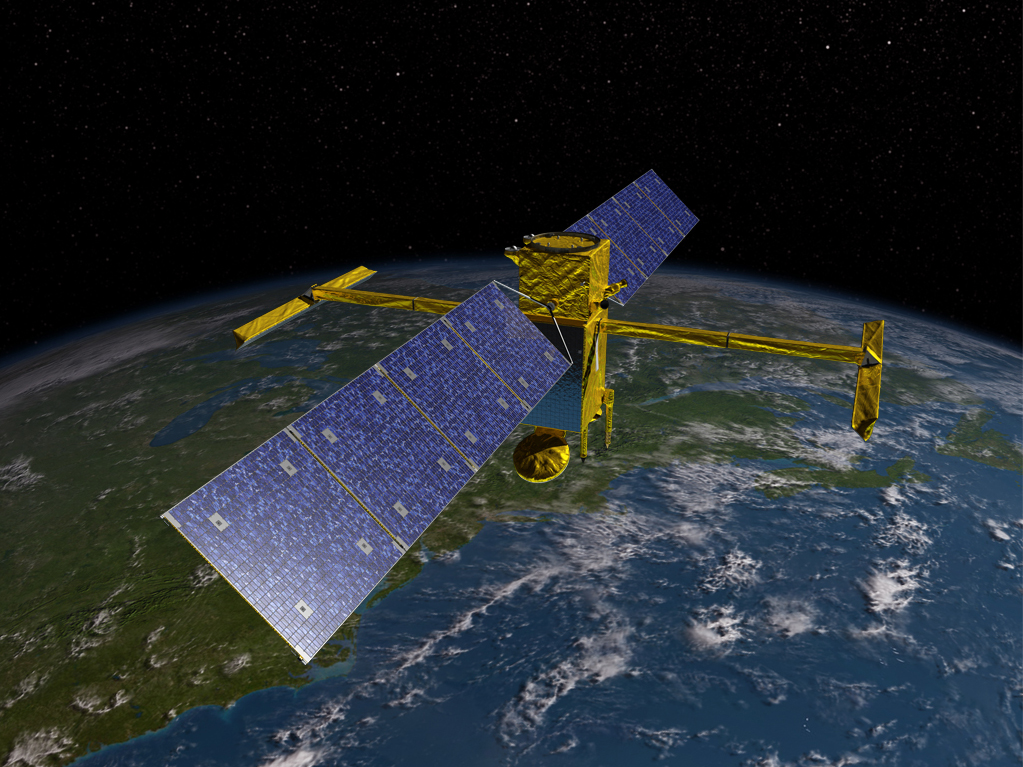
SWOT
Launch Date: December 16, 2022
Launch Site: Vandenberg Space Force Base, CA
Launch Vehicle: SpaceX Falcon 9
The Surface Water and Ocean Topography (SWOT) satellite built for NASA and the French space agency Centre National d’Études Spatiales (CNES) to observe nearly all the water on our planet’s surface lifted off on its way to low-Earth orbit on December 16, 2022. The SWOT spacecraft also has contributions from the Canadian Space Agency (CSA) and the UK Space Agency.
The SWOT spacecraft launched atop a SpaceX rocket from Space Launch Complex 4E at Vandenberg Space Force Base in California with a prime mission of three years. The satellite will measure the height of water in freshwater bodies and the ocean on more than 90% of Earth’s surface. This information will provide insights into how the ocean influences climate change; how a warming world affects lakes, rivers, and reservoirs; and how communities can better prepare for disasters, such as floods.
JPSS-2
Launch Date: November 10, 2022
Launch Site: Vandenberg Space Force Base, CA
Launch Vehicle: ULA Atlas V 401
The Joint Polar Satellite System (JPSS) is the Nation’s advanced series of polar-orbiting environmental satellites. JPSS-2 is the third satellite in the JPSS series, a collaborative effort between NOAA and NASA. This partnership ensures a continuous series of global weather data to secure a more “Weather-Ready” Nation. JPSS represents significant technological and scientific advancements in observations used for severe weather prediction and environmental monitoring. These data are critical to the timeliness and accuracy of forecasts three to seven days in advance of a severe weather event.
After the United Launch Alliance (ULA) Atlas V delivered JPSS-2 to orbit, Low-Earth Orbit Flight Test of Inflatable Decelerator (LOFTID) was powered on and its 6-meter HIAD aeroshell was inflated. LOFTID entered Earth’s atmosphere, demonstrating it can slow down and survive the entry heating and pressure loads.
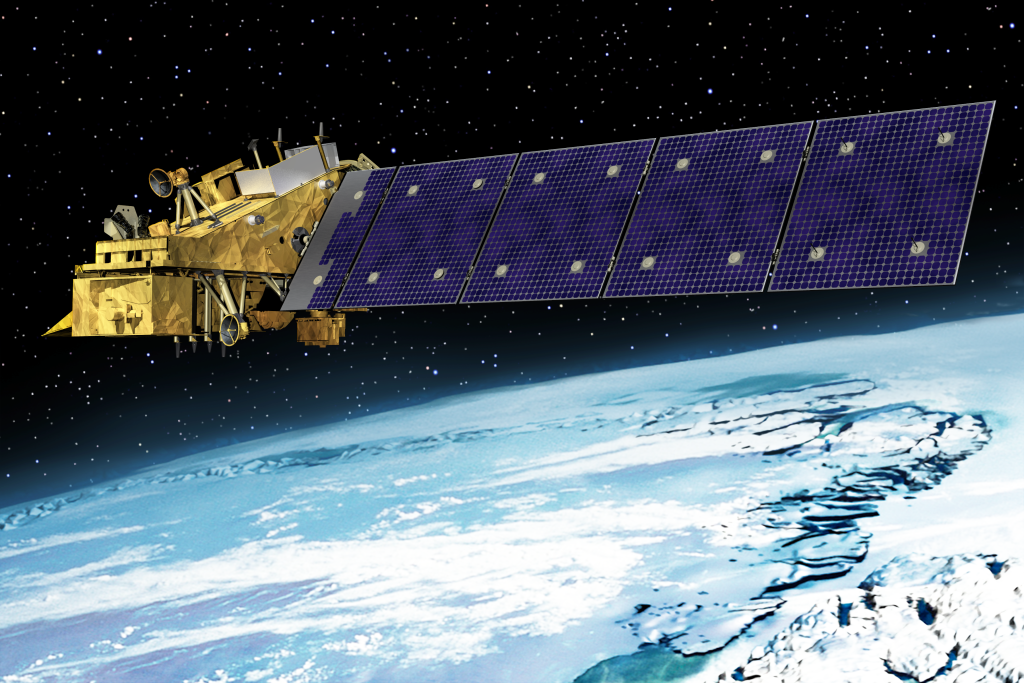
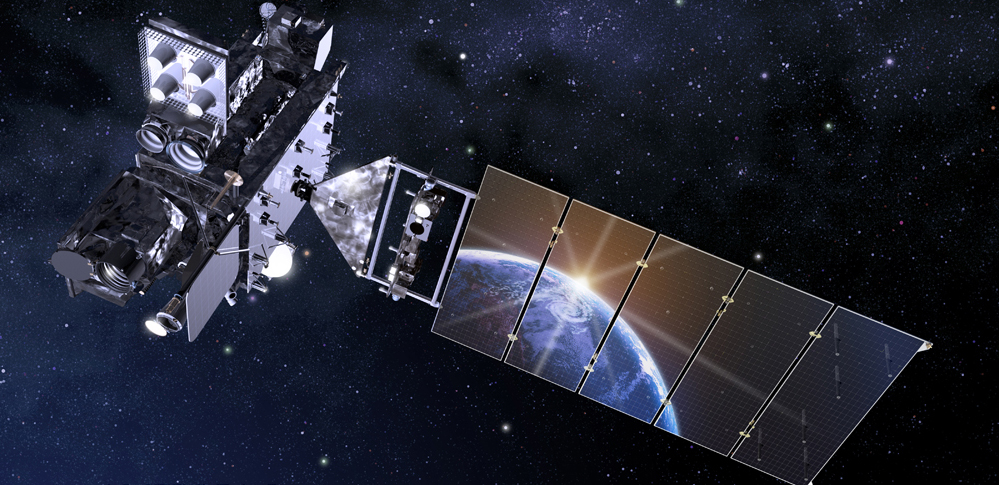
GOES-T
Launch Date: March 1, 2022
Launch Site: Cape Canaveral Space Force Station, FL
Launch Vehicle: ULA Atlas V 541
NASA’s Geostationary Operational Environmental Satellite-T (GOES-T) mission launched at 4:38 p.m. EST on Tuesday, March 1, 2022, on a United Launch Alliance Atlas V 541 rocket from NASA’s Kennedy Space Center in Florida.
A joint effort between NASA and NOAA, GOES-T was renamed GOES-18 once it reached geostationary orbit, replacing GOES-17 as GOES West. GOES-18 is positioned to watch over the western contiguous United States, Alaska, Hawaii, Mexico, Central America, and the Pacific Ocean. The satellite is ideally located to monitor weather systems and hazards that most affect this region of the Western Hemisphere.
IXPE
Launch Date: December 9, 2021
Launch Site: Cape Canaveral Space Force Station, FL
Launch Vehicle: SpaceX Falcon 9
A joint effort with the Italian Space Agency, the IXPE observatory is NASA’s first mission dedicated to measuring the polarization of X-rays from the most extreme and mysterious objects in the universe – supernova remnants, supermassive black holes, and dozens of other high-energy objects. Some of the technical and science objectives include improving polarization sensitivity, providing simultaneous spectral, spatial, and temporal measurements, determining how particles are accelerated in Pulsar Wind Nebulae, among others.
IXPE: New Mission to Explore Universe’s Most Dramatic Objects
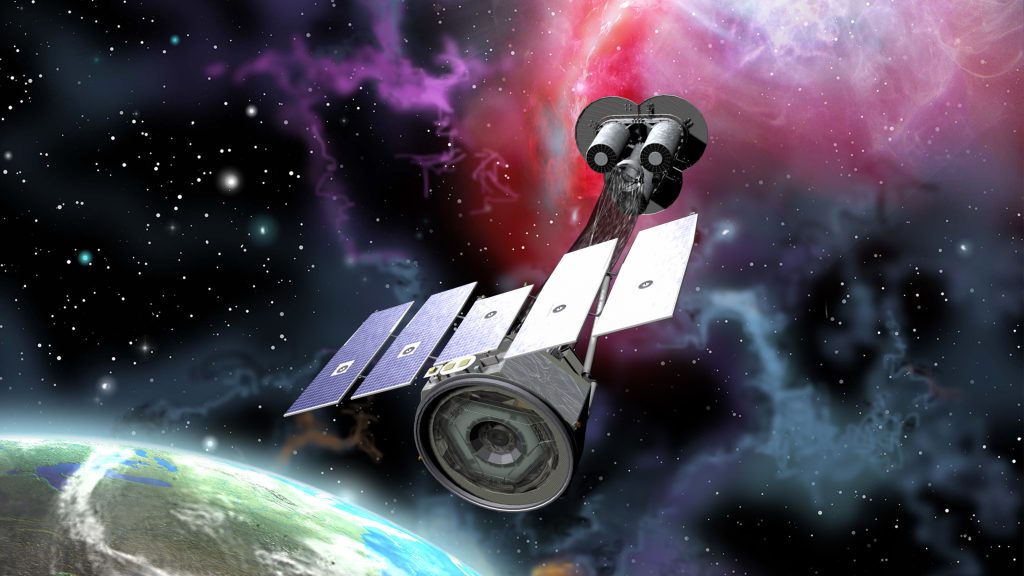
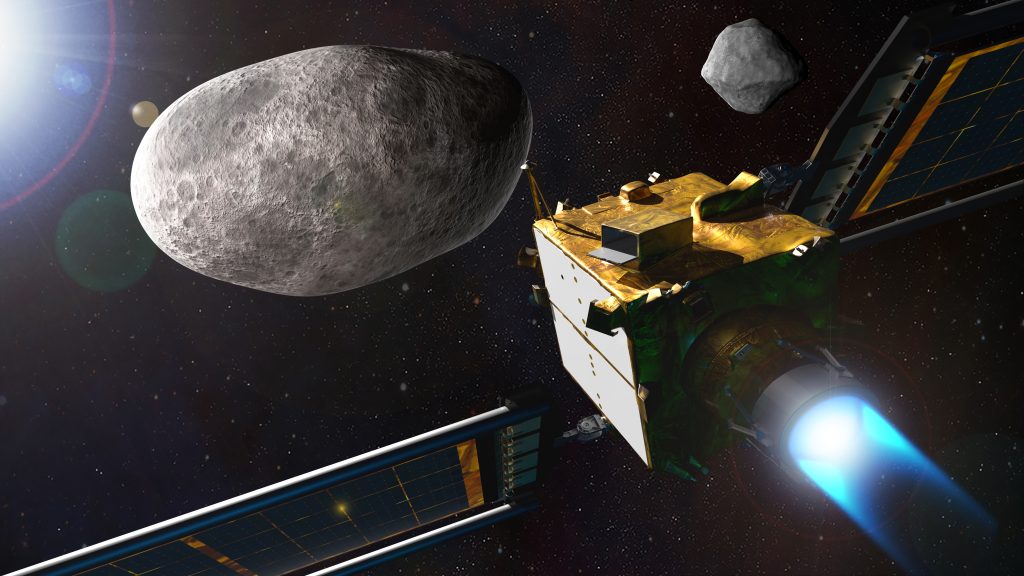
DART
Launch Date: November 23, 2021
Launch Site: Vandenberg Space Force Base, CA
Launch Vehicle: SpaceX Falcon 9
NASA’s Double Asteroid Redirection Test (DART), the world’s first full-scale mission to test technology for defending Earth against potential asteroid or comet hazards, launched on November 23, 2021 from Vandenberg Space Force Base in California. As part of NASA’s larger planetary defense strategy, DART will impact a known asteroid that is not a threat to Earth. Its goal is to slightly change the asteroid’s motion in a way that can be accurately measured using ground-based telescopes.
Lucy
Launch Date: October 16, 2021
Launch Site: Cape Canaveral Space Force Station, FL
Launch Vehicle:uu ULA Atlas V 401
Lucy is the first space mission to study the Trojans. The mission takes its name from the fossilized human ancestor (called “Lucy” by her discoverers) whose skeleton provided unique insight into humanity’s evolution. Likewise, the Lucy mission will revolutionize our knowledge of planetary origins and the formation of the solar system.
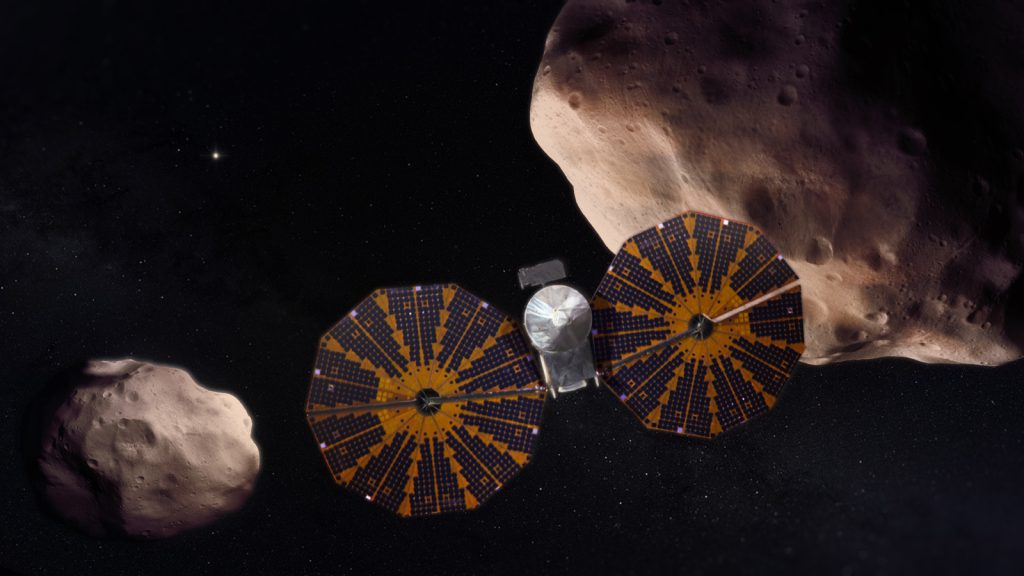
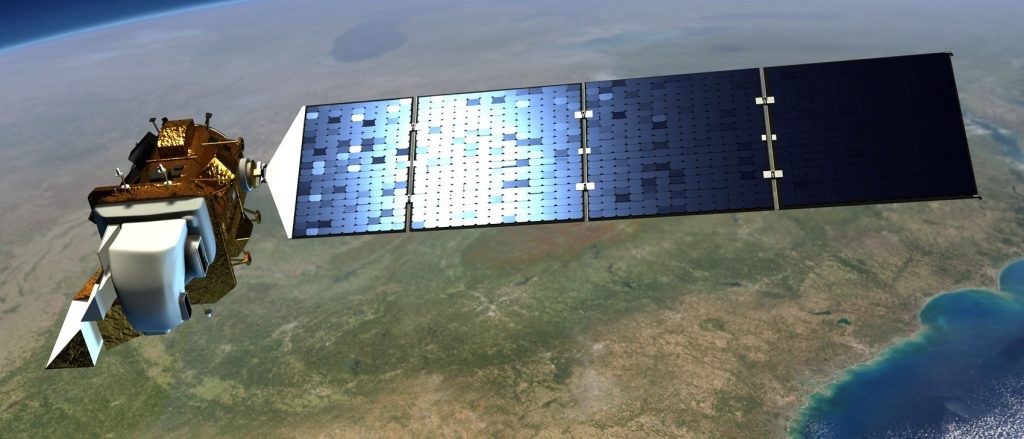
Landsat 9
Launch Date: September 27, 2021
Launch Site: Vandenberg Space Force Base, CA
Launch Vehicle: ULA Atlas V 401
Landsat 9 will extend our ability to measure changes on the global land surface at a scale where we can separate human and natural causes of change. When land use and resource availability issues arise, Landsat 9 will help decision makers make informed management decisions. Landsat 9 will thus contribute a critical component to the international strategy for monitoring the health and state of the Earth.
Sentinel-6 Michael Freilich
Launch Date: November 21, 2020
Launch Site: Vandenberg Space Force Base, CA
Launch Vehicle: SpaceX Falcon 9
Sentinel-6 Michael Freilich will provide ongoing measurements of global sea level rise – one of the most important impacts of human-caused climate change. The data will also support operational oceanography, improving forecasts of ocean currents as well as wind and wave conditions. In addition, it will help to improve forecasts of weather conditions likely to prevail two to four weeks ahead (e.g., hurricane intensity forecasting).
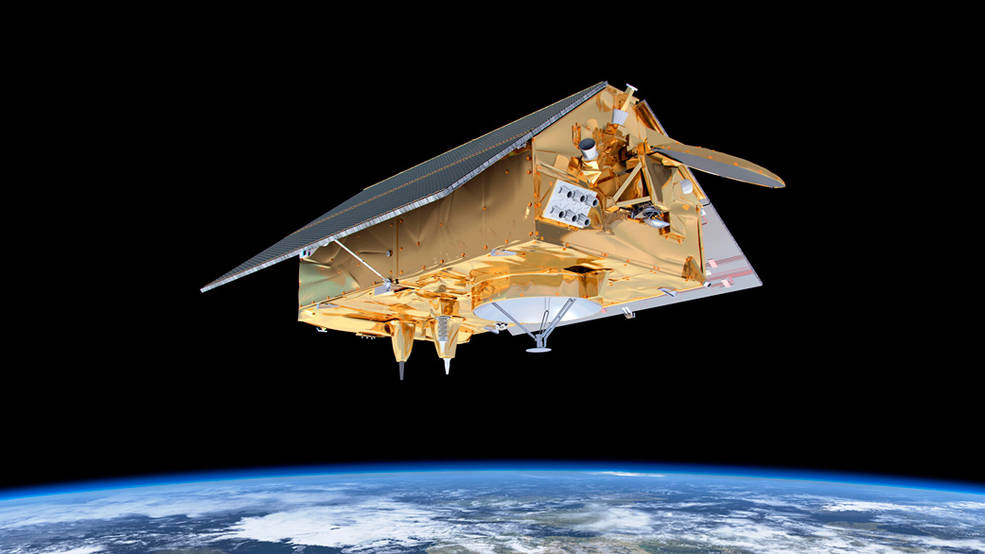
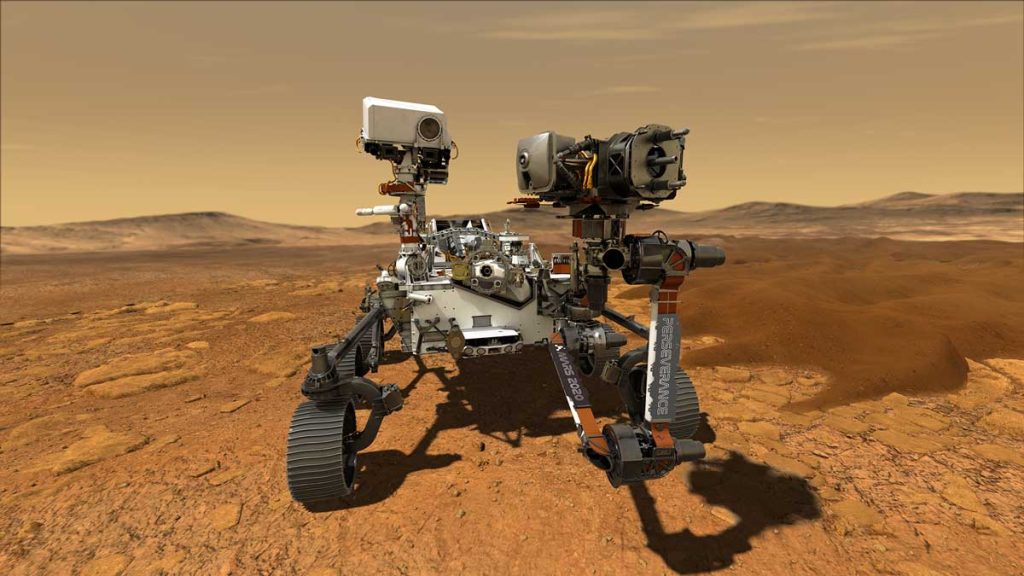
Mars 2020
Launch Date: July 30, 2020
Launch Site: Cape Canaveral Space Force Station, Florida
Launch Vehicle: ULA Atlas V-541
NASA’s Launch Services Program based at Kennedy managed the launch of Mars 2020 Perseverance. Perseverance launched aboard a United Launch Alliance Atlas V-541 on July 30, 2020 from Cape Canaveral Air Force Station, and landed on Mars at the Jezero Crater on February 18, 2021. Developed under NASA’s Mars Exploration Program, Perseverance’s mission is to search for signs of past microbial life, characterize the planet’s climate and geology, collect samples for future return to Earth and pave the way for human exploration of Mars.
Solar Orbiter
Launch Date: February 9, 2020
Launch Site: Cape Canaveral Space Force Station, Florida
Launch Vehicle: ULA Atlas V-411
Solar Orbiter is an international cooperative mission between ESA (the European Space Agency) and NASA that addresses a central question of heliophysics: How does the Sun create and control the constantly changing space environment throughout the solar system? Solar Orbiter is traveling as close as 26 million miles from the Sun, inside the orbit of Mercury to measure the magnetic fields, waves, energetic particles and plasma escaping the Sun while they are still in their pristine state, before being modified and mixed in their long journey from the Sun.
Solar Orbiter is capturing the first ever images of the Sun’s north and south poles from high latitudes. At its fastest, Solar Orbiter can almost catch up to the Sun’s rate of rotation, allowing the spacecraft to hover over specific spots on the Sun as it turns and study how a single solar feature evolves over time.
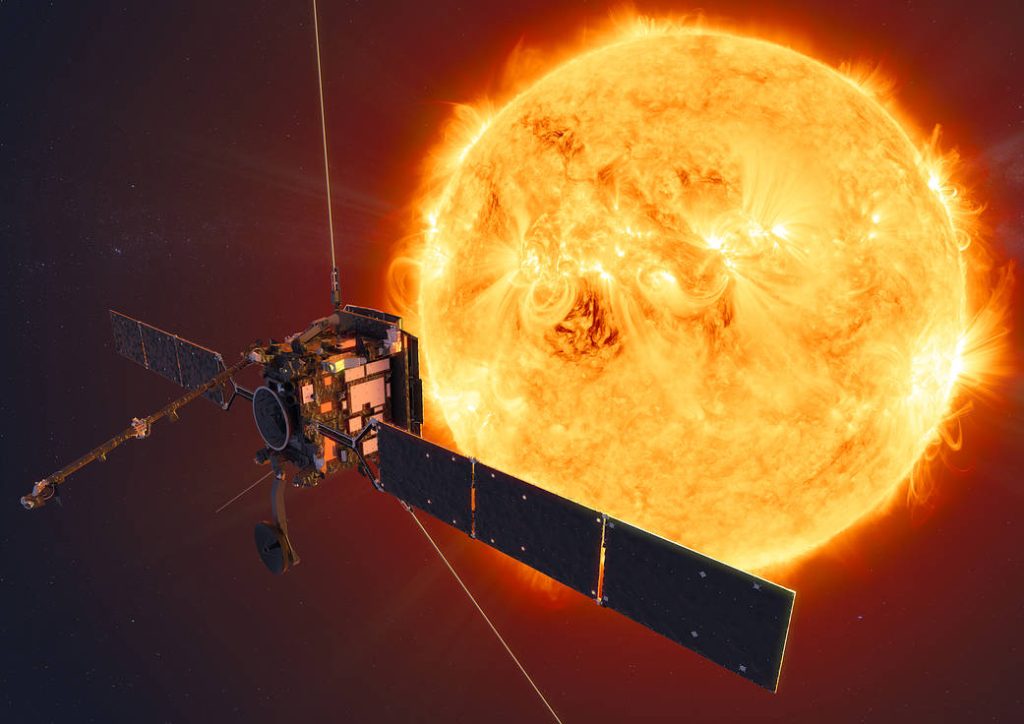
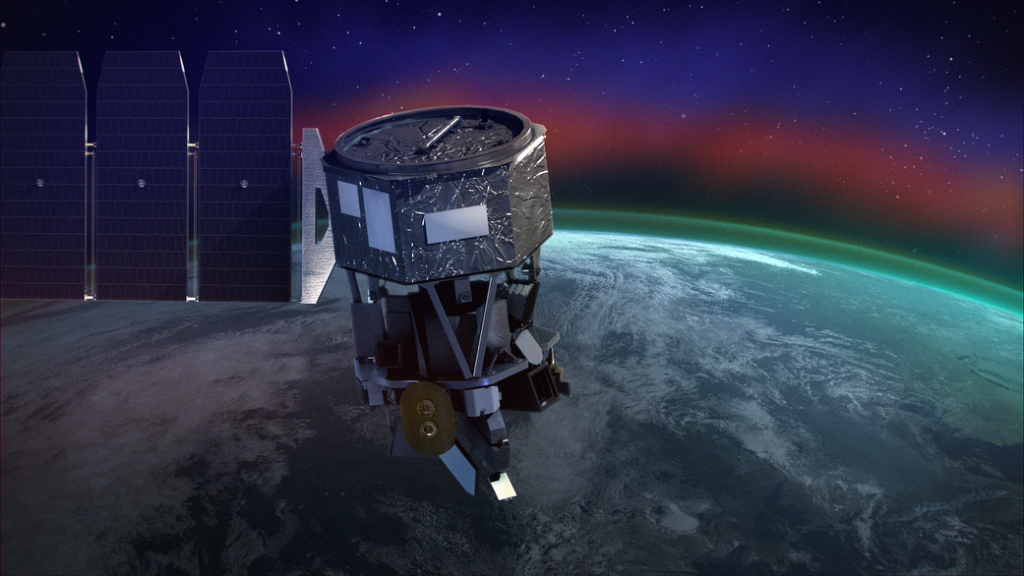
ICON
Launch Date: October 10, 2019
Launch Site: Cape Canaveral Space Force Station, Florida
Launch Vehicle: Northrop Grumman Pegasus XL
The Ionospheric Connection Explorer will study the frontier of space: the dynamic zone high in our atmosphere where terrestrial weather from below meets space weather above. In order to understand this complicated region of near-Earth space, called the ionosphere, NASA has developed the ICON mission. To understand what drives variability in the ionosphere requires a careful look at a complicated system that is driven by both terrestrial and space weather.
ICON will help determine the physics of our space environment and pave the way for mitigating its effects on our technology, communications systems and society.
ICESat-2
Launch Date: September 15, 2018
Launch Site: Vandenberg Space Force Base, California
Launch Vehicle: ULA Delta II
The Ice, Cloud and land Elevation Satellite-2 (ICESat-2) was launched to measure changes in Earth’s ice and improve forecasts of the global impacts. With its fast-firing laser, the satellite collects information enabling scientists to calculate—to within fractions of an inch—how much the vast ice sheets of Antarctica and Greenland rise or fall each year. ICESat-2 takes measurements across the globe and provides an incredibly precise height map of our planet in unprecedented detail. Its focus is on Earth’s poles, including the Arctic region where temperatures are rising faster than at other latitudes.
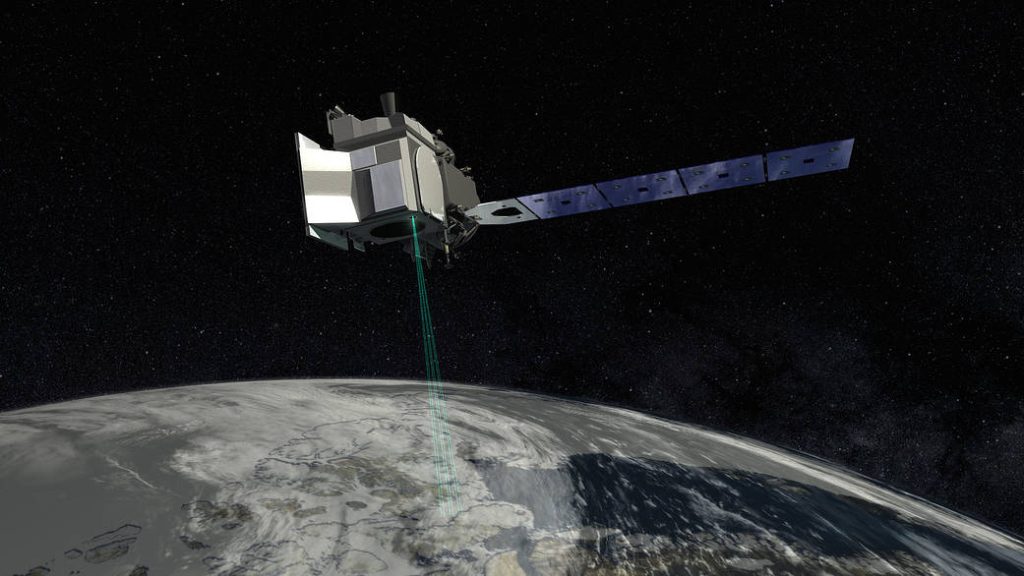
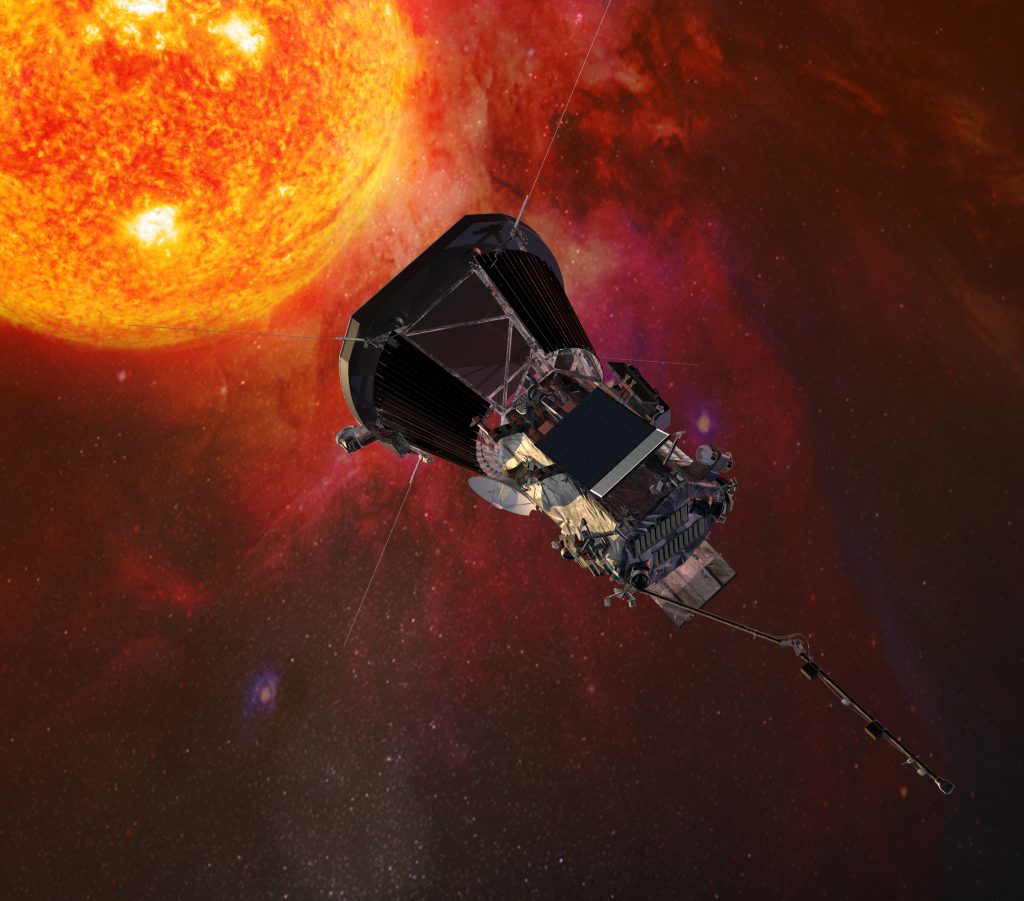
Parker Solar Probe
Launch Date: August 12, 2018
Launch Site: Cape Canaveral Space Force Station, Florida
Launch Vehicle: ULA Delta IV-Heavy with Upper Stage
Launched to unlock the mysteries of the Sun’s atmosphere, Parker Solar Probe will use seven Venus flybys over nearly seven years to gradually reduce its orbit around the Sun. The spacecraft will come close to 4% of the distance from the Sun to the Earth, well within the orbit of Mercury—and closer to the Sun’s surface than any spacecraft before it.
Flying into the part of the Sun’s atmosphere known as the corona for the first time, Parker Solar Probe will revolutionize our understanding of this mysterious region. The spacecraft will employ four instrument suites designed to study electric and magnetic fields, plasma, and energetic particles, as well as image the solar wind. The mission will trace how energy moves through the solar corona and explore what accelerates the solar wind and solar energetic particles, enabling critical contributions to our ability to forecast changes in Earth’s space environment that impact life and technology on Earth.
InSight
Launch Date: May 5, 2018
Launch Site: Vandenberg Space Force Base, California
Launch Vehicle: ULA Atlas V-401
InSight (Interior Exploration using Seismic Investigations, Geodesy and Heat Transport) is a NASA Discovery Program mission that will place a single geophysical lander on Mars to study its deep interior. But InSight is more than a Mars mission – it is a terrestrial planet explorer that will address one of the most fundamental issues of planetary and solar system science – understanding the processes that shaped the rocky planets of the inner solar system (including Earth) more than four billion years ago.
By using sophisticated geophysical instruments, InSight will delve deep beneath the surface of Mars, detecting the fingerprints of the processes of terrestrial planet formation, as well as measuring the planet’s “vital signs”: Its “pulse” (seismology), “temperature” (heat flow probe), and “reflexes” (precision tracking).
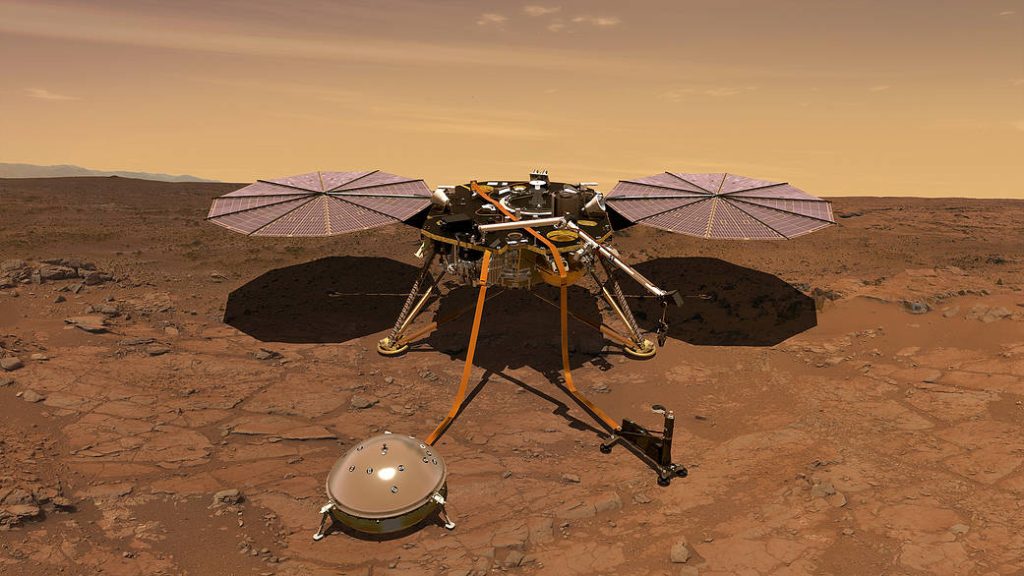
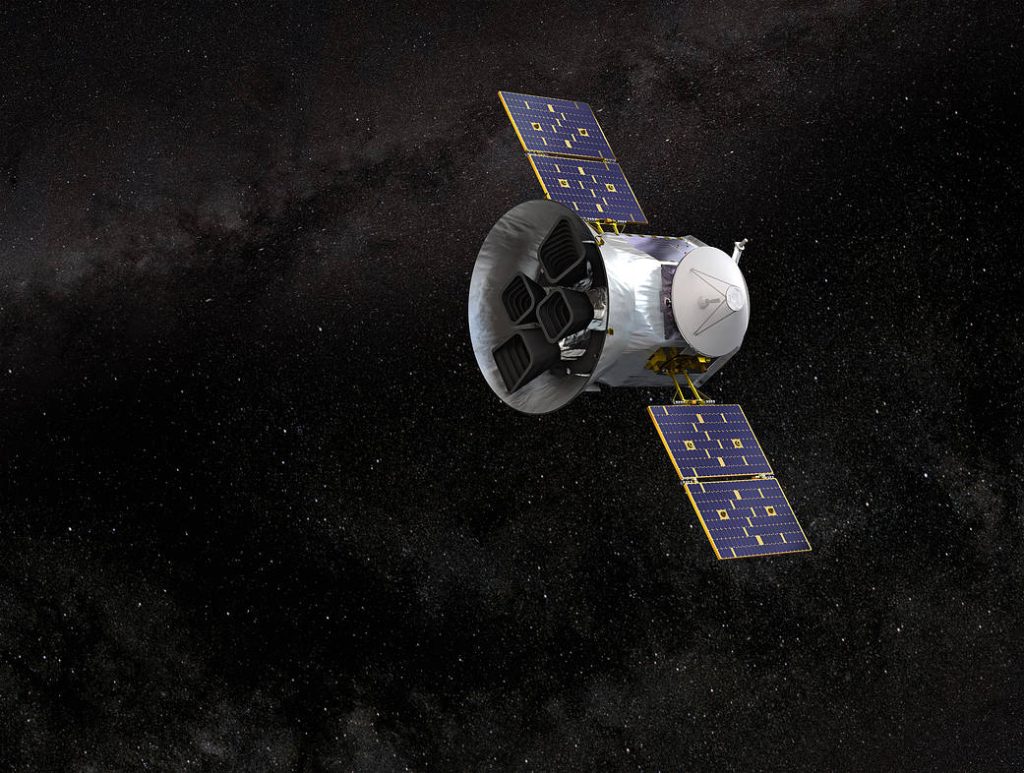
TESS
Launch Date: April 18, 2018
Launch Site: Cape Canaveral Space Force Station, Florida
Launch Vehicle: SpaceX Falcon 9
The Transiting Exoplanet Survey Satellite (TESS) is the next step in the search for planets outside of our solar system, including those that could support life. The mission will find exoplanets that periodically block part of the light from their host stars, events called transits. TESS will survey 200,000 of the brightest stars near the sun to search for transiting exoplanets.
TESS scientists expect the mission will catalog thousands of planet candidates and vastly increase the current number of known exoplanets. Of these, approximately 300 are expected to be Earth-sized and super-Earth-sized exoplanets, which are worlds no larger than twice the size of Earth. TESS will find the most promising exoplanets orbiting our nearest and brightest stars, giving future researchers a rich set of new targets for more comprehensive follow-up studies.
GOES-17 (formerly GOES-S)
Launch Date: March 1, 2018
Launch Site: Cape Canaveral Space Force Station, Florida
Launch Vehicle: ULA Atlas V-541
NASA launched the Geostationary Operational Environmental Satellite-S into orbit for NOAA — the National Oceanic and Atmospheric Administration.
The spacecraft, known as GOES-17 (GOES-S), will give meteorologists an additional tool to significantly improve the detection and observation of environmental phenomena that directly affect public safety and protection of property.
GOES-S is the second in the GOES-R Series of next-generation weather satellites that includes GOES-R (now GOES-16), -S, -T and -U. GOES-S has been renamed GOES-17 since reaching geostationary orbit. It will reside in a geostationary position over the Pacific Ocean to provide imagery and data to improve weather forecasts for the western continental U.S., Alaska, Hawaii, and Pacific Ocean to New Zealand. Geosynchronous satellites orbit about 22,000 miles above the Earth allowing them to keep constant watch over the same location. These spacecraft play a crucial role in U.S. weather monitoring and forecasting.
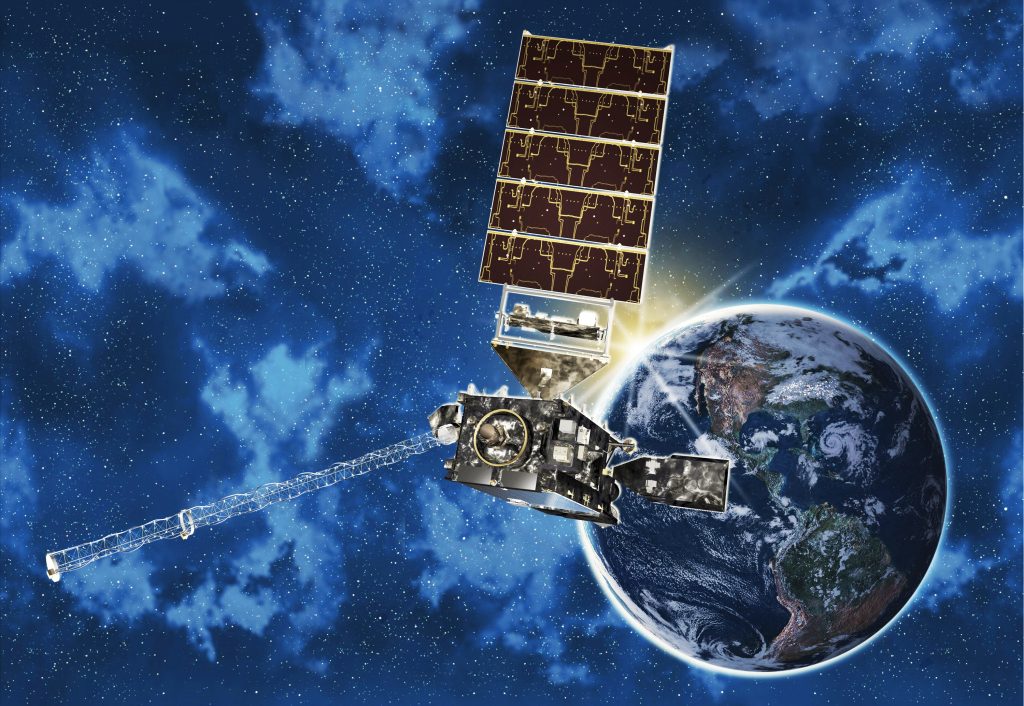
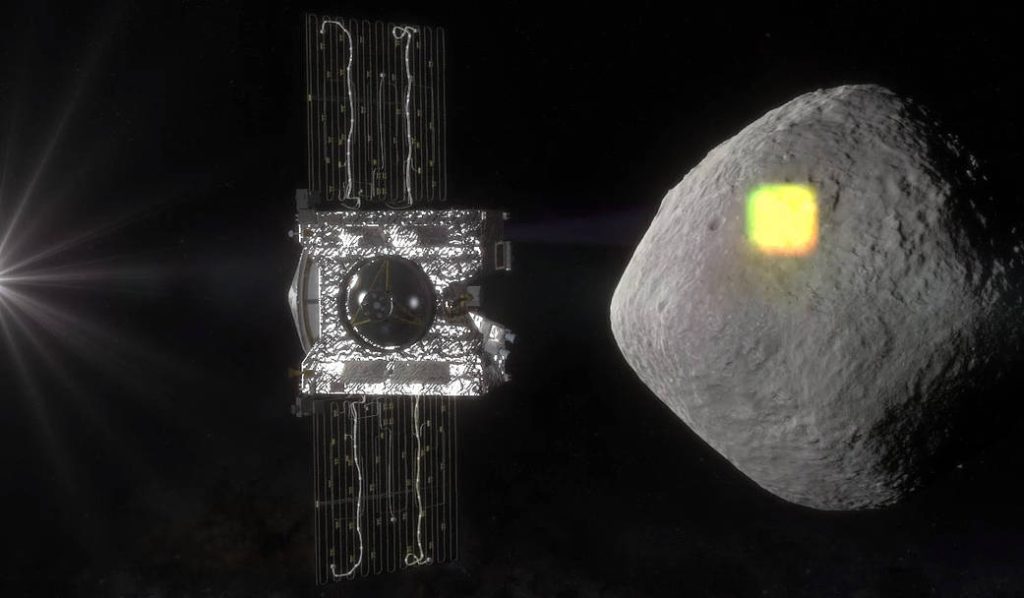
OSIRIS-REx
Launch Date: September 8, 2016
Launch Site: Cape Canaveral Space Force Station, Florida
Launch Vehicle: Atlas V-411
The Origins Spectral Interpretation Resource Identification Security – Regolith Explorer spacecraft will travel to a near-Earth asteroid, called Bennu (formerly 1999 RQ36), and bring at least a 2.1-ounce sample back to Earth for study. The mission will help scientists investigate how planets formed and how life began, as well as improve our understanding of asteroids that could impact Earth.
NASA’s OSIRIS-REx will be the first U.S. mission to bring an asteroid sample to Earth. The spacecraft is currently orbiting asteroid Bennu and will spend two years mapping it before collecting a sample and returning to Earth. The sample will be stored on the spacecraft and delivered to Earth in September 2023.
Jason-3
Launch Date: January 17, 2016
Launch Site: Vandenberg Space Force Base, California
Launch Vehicle: SpaceX Falcon 9
Jason-3 is the fourth mission in U.S.-European series of satellite missions that measure the height of the ocean surface. The mission will extend the time series of ocean surface topography measurements (the hills and valleys of the ocean surface) begun by the TOPEX/Poseidon satellite mission in 1992 and continuing through the Jason-1 (launched in 2001) and the currently operating OSTM/Jason-2 (launched in 2008) missions. These measurements provide scientists with critical information about circulation patterns in the ocean and about both global and regional changes in sea level and the climate implications of a warming world.
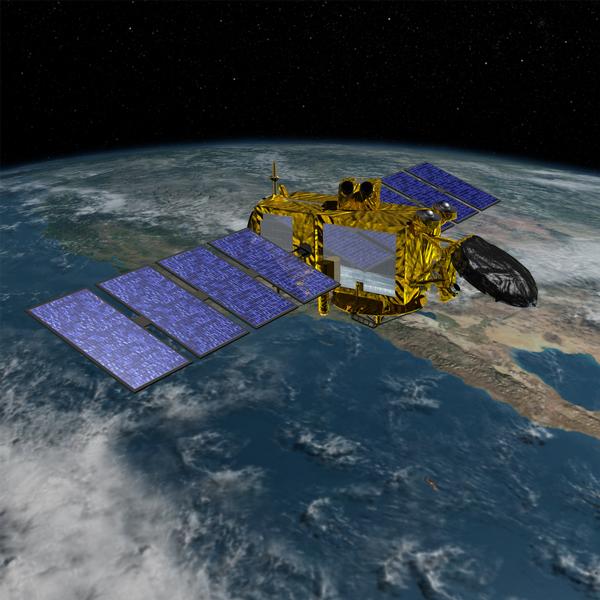
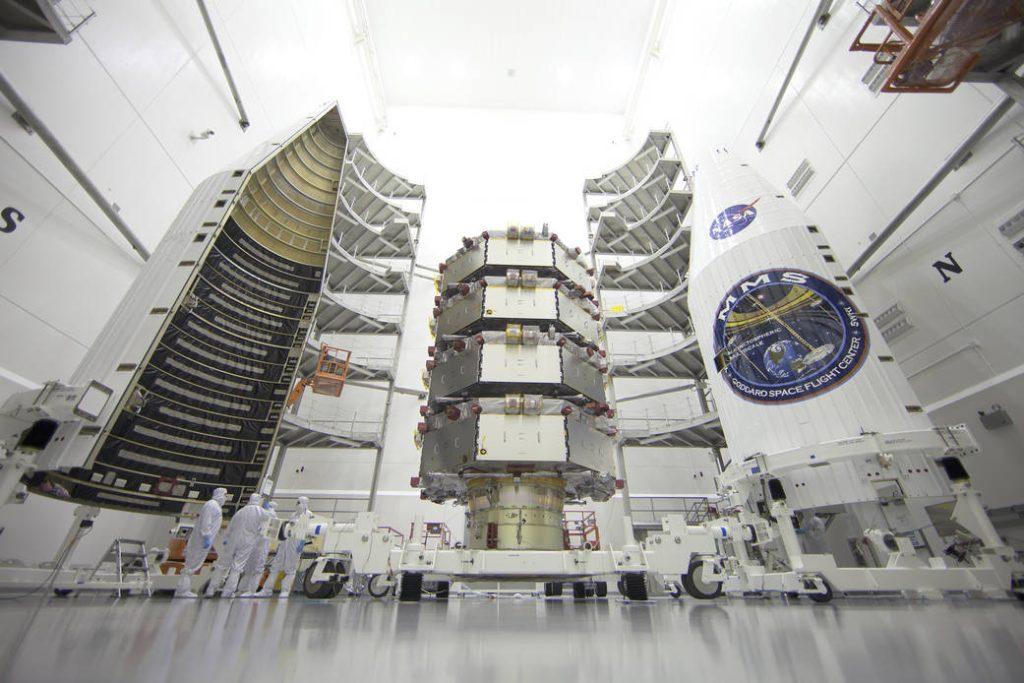
MMS (Magnetospheric Multiscale)
Launch Date: March 12, 2015
Launch Site: Cape Canaveral Space Force Station, Florida
Launch Vehicle: ULA Atlas V-421
The Magnetospheric Multiscale, or MMS, mission studies the mystery of how magnetic fields around Earth connect and disconnect, explosively releasing energy via a process known a magnetic reconnection. MMS consists of four identical spacecraft that work together to provide the first three-dimensional view of this fundamental process, which occurs throughout the universe.
The mission observes reconnection directly in Earth’s protective magnetic space environment, the magnetosphere. By studying reconnection in this local, natural laboratory, MMS helps us understand reconnection elsewhere as well, such as in the atmosphere of the sun and other stars, in the vicinity of black holes and neutron stars, and at the boundary between our solar system’s heliosphere and interstellar space.
SMAP (Soil Moistureu Active-Passive)
Launch Date: January 31, 2015
Launch Site: Vandenberg Space Force Base, California
Launch Vehicle: ULA Delta II
The Soil Moisture Active Passive (SMAP) satellite maps global soil moisture and detects whether soils are frozen or thawed. This mission helps scientists understand the links between Earth’s water, energy and carbon cycles; reduce uncertainties in predicting weather and climate; and enhance our ability to monitor and predict natural hazards such as floods and droughts.
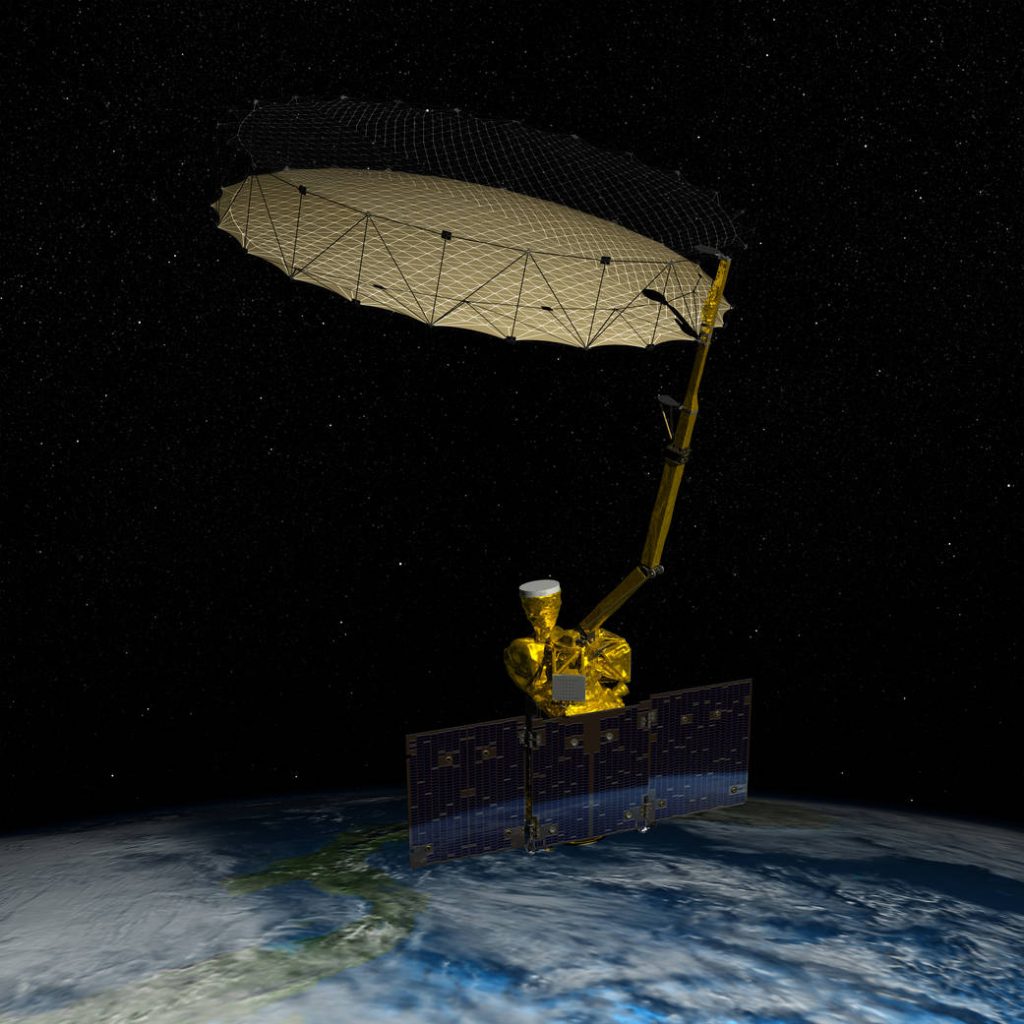
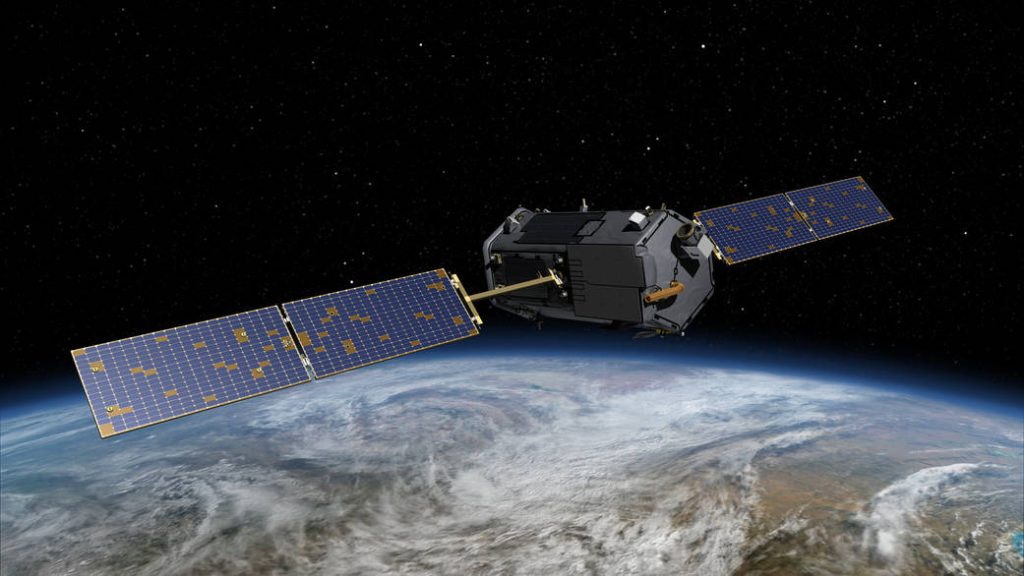
OCO-2
Launch Date: July 2, 2014
Launch Site: Vandenberg Space Force Base, California
Launch Vehicle: uDelta II
The Orbiting Carbon Observatory-2 — the first NASA remote-sensing mission dedicated to studying carbon dioxide — is the latest mission in NASA’s ongoing study of the global carbon cycle. The mission provides a key new measurement that can be combined with other ground and aircraft measurements and satellite data to answer important questions about the processes that regulate atmospheric carbon dioxide and carbon dioxide’s role in the carbon cycle and climate. This information will help policymakers and business leaders make better decisions to ensure climate stability and, at the same time, retain our quality of life. The mission will also serve as a pathfinder for future long-term satellite missions to monitor carbon dioxide.